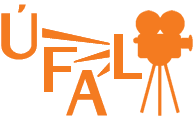Representing Spatial Information in Language
Speaker:
James Pustejovsky
Abstract:
In this talk, I explore several aspects of how space is interpreted in language, both
semantically within Generative Lexicon, and computationally, within dynamic logic. Specifically, I
discuss two problems: the spatial anchoring of events in language; and the representation of spatial
knowledge employed for manipulating artifacts. For the former, I suggest three mechanisms are at
work to explain the temporal and spatial anchoring of events: (i) events must be viewed as complex
objects with internal subeventual structure; (ii) there may be multiple times and locations associated
with an event; and (iii) event times and locations are supervenient upon the participants in the
events. For the latter, I adopt an ecological perspective on the actions and spaces that are associated
with how we interact with artifacts. I introduce the notion of an object's 'habitat', denoting the
'situated modes of explanation' of a concept. While the qualia structure are 'semantically narrow'
representations referencing aspects of an object's denotation, components, use, and origin, the
'habitat' situates the object or event in the context in which it is experienced by the cognitive agent.
Of particular interest is the habitat associated with the functioning and use of an object. I will call this
functional habitat the 'Telic Zone' for an object. I will demonstrate how the functional activities
associated with artifacts must be embedded within the Telic zone for that object.
Length:
01:09:50
Date:
08/10/2012


